TFI turns 20: Our second decade
While the decade from 1998 to 2008 was one of new beginnings in the global trade fair industry, the years that followed brought setbacks. The environment became more challenging between 2008 and 2018.
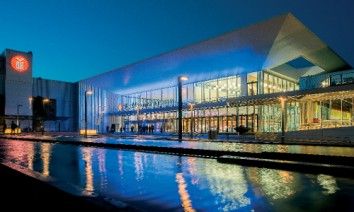
When we celebrated the tenth anniversary of Trade Fairs International in early summer 2008, the world stood at the brink of a new era. A few months later a far-reaching event occurred: In mid-September the US bank Lehman Brothers went bankrupt, making the global public aware of the financial crisis. The global economy was on the brink of collapse and months later the stock markets crashed. The year 2009 was a very challenging one for exhibiting companies and fair organisers. Today, we know that the crisis has been overcome for the time being, although humankind has obviously become no wiser. Banks continue to pay billions in bonuses - in fields of business that are not profitable. So, poor results continue to be rewarded, and the next crash may only be a matter of time.
Significantly, the UFI Summer Seminar took place in Thessaloniki, Greece, in June 2008. In retrospect, the national carrier Olympic Airlines’ inability to take all participants to the destination was a precursor - an early warning sign - of the looming euro crisis. Shortly thereafter it was not only the run-down Greek airline but the entire state that sent out SOS signals. Thanks to the favourable financing terms offered by EU membership, the state had been spending more than it was earning for many years. Greece is certainly the most extreme example of a public community that had lived far beyond its means. Other countries were also drawn into the downward spiral – such as Spain, whose trade fair sector was hit by the euro crisis. Spanish events collapsed, and many trade fairs could at times only survive with hefty discounts for exhibitors.
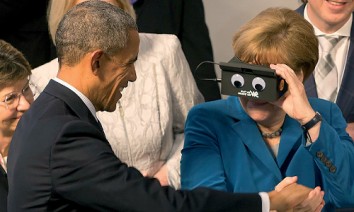
But as if the economic crises had not been enough at that time, nature also took its toll. Since April 2010 the name of the Icelandic volcano that erupted that year has been known worldwide. Only its pronunciation still causes difficulties: Eyjafjallajökull, which even managed to put the small country on the global tourism map. Due to its ash cloud, air traffic was suspended in large parts of northern and central Europe. Important trade fairs were affected, including Hannover Messe and Light + Building in Frankfurt. Trade fair visitors could not get to events or fly home. Most of them showed a sense of humour, some even returned to their home countries by taxi, causing the much vaunted yields of trade fair-related passenger transport to soar.
In the past decade European countries have mainly been concerned about themselves – culminating in the 2016 Brexit vote. Elsewhere, there are less doubts, the Asian markets are booming. The continent has now become the pacemaker of the global exhibition industry. Not only have many exhibition centres opened or expanded but many fairs have made their debut. This is accompanied by double-digit growth rates for specialist trade fairs. China is number one in this segment but South East Asia is also very dynamic. And things are even moving in India, which still lags far behind in exhibition infrastructure measured by the size of its population. Its economy has seen some buoyant growth over the past few years. And there is a further indicator of the region’s dynamic development: After the globally hosted UFI Congress, the Asia Pacific Conference has now become the second-largest event of the Global Association of the Exhibition Industry.
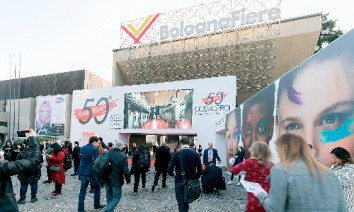
In the past few years, now and in future the focus is and has been on sustainability, security and digitisation, as the industry’s three major concerns. While, until recently, almost all centre operators and organisers emphasised their green credentials, now the most popular buzzword is “digital”. Above all, this entails investments and uncertainty as to whether the business models will actually yield benefits. Because the target groups expect digital services, action seems crucial. And events constantly need to reinvent themselves in order to survive by adapting to the changing circumstances of the future.
When it comes to coping with change, the so-called international “leading trade fairs” have a clear advantage. They remain must-go events, while B or C-league events have a harder time. This has to do with the international diversity of the visitors, with habit, but also with a completely different phenomenon. Leading events in Europe, for example, usually take place in the most populous countries, with a few exceptions. This is certainly related to demand and, in the case of Germany – with its nine neighbouring countries - also to convenient accessibility. Last but not least, the fact that marketing budgets of international players are increasingly concentrated in large countries also plays a role. Smaller countries and the trade shows staged there are increasingly losing out, at least in Europe – globalisation does not benefit all trade fair destinations equally.
Author: Peter Borstel
This article was published in TFI issue 2/2018
Timeline
2008
United: French organisers Comexpo and Exposium join forces to form Comexposium.
Investment: BolognaFiere spends around 170 million euros on its new Halls 14 and 15; and Palexpo in Geneva invests over 100 million Swiss francs from late 2008 until 2013.
2009
Anniversary: Russia’s leading trade fair Expocentre turns 50.
Shopping tour: NürnbergMesse buys a Brazilian exhibition company and becomes one of the largest foreign organisers in Brazil.
2010
Icon: Marina Bay Sands in Singapore starts operating.
Full expansion: Shanghai’s SNIEC now has 200,000 square metres of hall space.
2011
Bigger: The second phase of Kintex doubles the hall space of Korea's largest exhibition centre to 108,000 square metres.
Change: The Tokyo Motor Show moves from Makuhari Fair to Tokyo Big Sight.
2012
Construction: Kap Europa convention centre is built at Messe Frankfurt.
Replacement: Berlin starts building the CityCube, which is to be used for meetings instead of the ICC as of 2014.
2013
Timely: The new Messe Basel opens just in time for the Baselworld watch and jewellery show.
Pioneer: Messe Düsseldorf has now been working in Russia for half a century.
2014
Divided: The Hong Kong Trade Development Council organises its jewellery show(s) in March at two venues for the first time: HKCEC and AsiaWorld-Expo.
New: The ExpoForum exhibition centre opens in St. Petersburg.
2015
Time-honoured: Leipziger Messe celebrates its 850th anniversary.
Sanctioned: Reciprocal trade restrictions between the EU and Russia lead to a declining western European participation in Russian trade fairs.
2016
State visit: US President Barack Obama visits Hannover Messe.
Networking: Initiated by UFI, the first Global Exhibitions Day makes its début.
2017
Expansion: BIEC in Bangalore now boasts 60,000 square metres of hall space.
Birthdays: Stockholmsmässan celebrates its 75th anniversary, Targi Kielce its 25th, and Messe Frankfurt turns 777.
Share in Facebook, Twitter or Google+:
TFI - Trade Fairs International - The International Trade Fair Magazine.
© 2006 - 2024 by TFI-Verlagsgesellschaft mbH. All rights reserved. TFI-Verlagsgesellschaft mbH shall accept no responsibility for the contents of external links and other contents.
TFI-Know-how
-
What to do when things go wrong at virtual or in-person events?

In the event world, it’s simply part of life if things don’t work out as planned.
-
How can networking be made to work at online events?

Networking typically happens at real, in-person events. But it’s also possible to do it online; it just works a little differently. There are various options available to organisers.
-
How can exhibitors stand out at trade fairs?
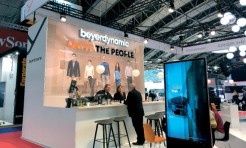
New products and a well-conceived stand design are not the only drivers for a successful presence. Many other factors are also important, but trade fair planners often lose sight of them.
-
How can industry decision-makers be reached online?
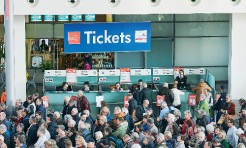
Trade fairs and trade fair companies need to constantly further develop, become more agile and flexible and offer services all year round. New, digital offerings are very important here. With its TrustedTargeting technology, Messe München offers its customers access to leading business-to-business decision-makers on the Internet.


